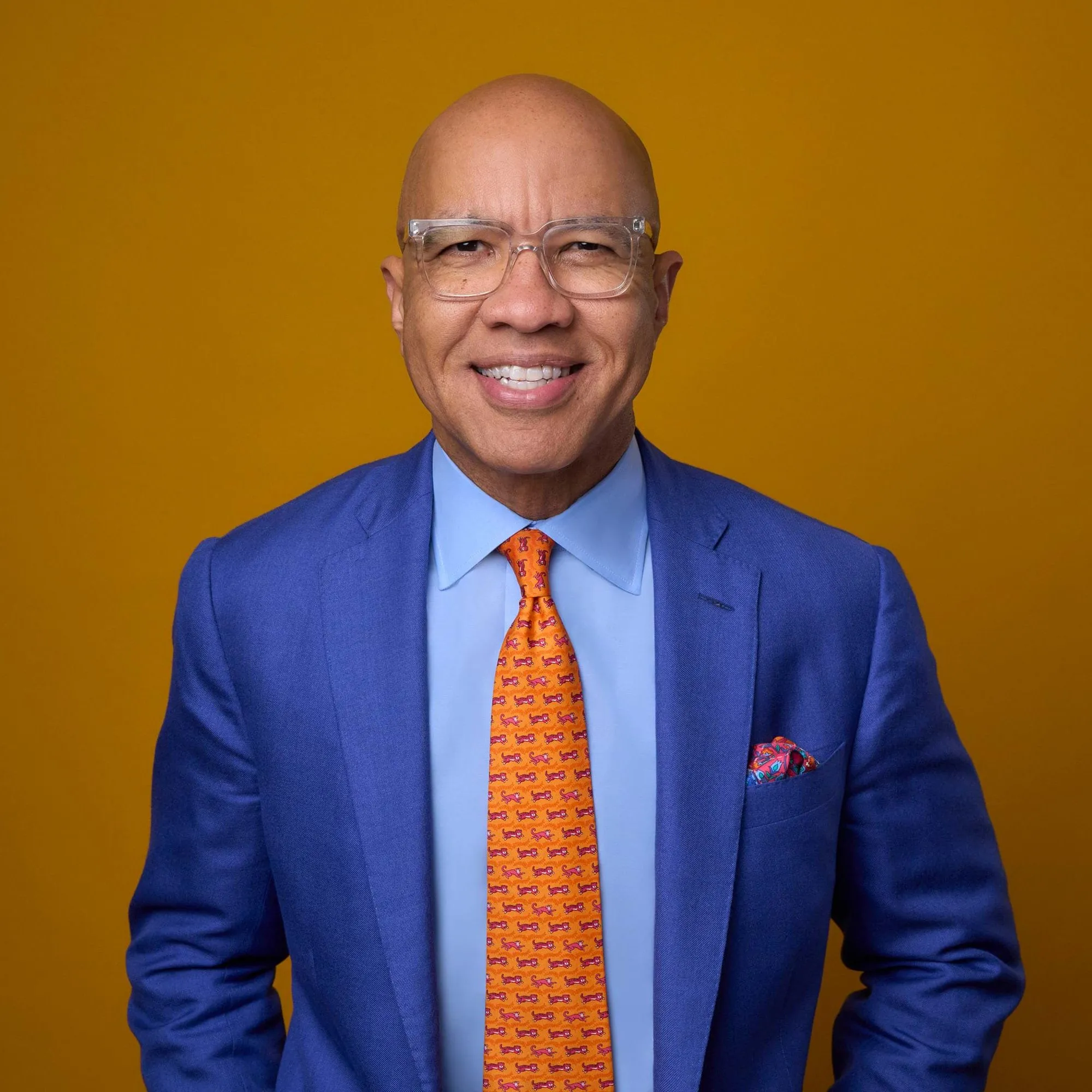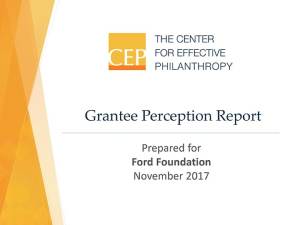In our Grantee Perception Report, there’s room for improvement—here’s how we’re responding
We all know it’s complicated for grant-receiving organizations to be completely honest with the organizations that give them grants. Yet without candid, substantive feedback from those we fund, we don’t always know how we’re falling short — or how we can improve.
That’s why we’re such fans of the Center for Effective Philanthropy (CEP), which offers a forum for the organizations we fund to provide that feedback.
CEP’s surveys are an important learning resource for us, offering data to help us assess our performance and effectiveness from the perspective of those we fund. (Full disclosure: Hilary is member of the CEP board.)
In the most recent grantee survey we participated in (our fourth in the last eight years), conducted last spring, CEP reached out to nearly 2,700 Ford grantees and analyzed the 1,550 responses received. The data from the survey produced a Grantee Perception Report (GPR) that compares our performance with results from prior years, as well as with results from a larger set of foundations.
We’re grateful to every organization that took such time and care to respond. Here’s what we heard.
Key findings
We’re proud that our grantees continue to see the foundation as a leader in the philanthropic sector, highlighting Ford’s long-term commitment to social justice causes, our willingness to take risks, and our support for innovation. We were given high scores for our strength in advancing knowledge and affecting policy, and in this category we were described with such words as “progressive,” “innovative,” “impactful,” and “visionary.”

President, Ford Foundation

Executive Vice President of Programs, Ford Foundation
If that is honest praise, then I would like to turn it back on the organizations we fund, whose work is all of those things and more.
But while those areas are relative strengths for Ford, there are others where we have room for improvement.
When it comes to how clearly and consistently we communicate our goals and strategy, our ratings are typical of other large private funders, but lower than typical when compared to CEP’s overall dataset. The same is true of how grantees perceive our responsiveness.
And when it comes to the overall quality of interactions with Ford, the organizations we fund rank us lower than both the typical funder in CEP’s dataset and the typical large private funder in their perceptions of fairness, and their comfort approaching us if a problem arises. In other words, they see us as less evenhanded and accessible than we aspire to be.
Given the feedback on clarity of our program strategies, we were not surprised to see comments from many respondents suggesting that they see this as a time of change at the foundation, one that makes them uncertain about our future direction. When asked to use one word to describe Ford, many use words like “changing,” “transition,” “confusing,” and “evolving.” Fortunately, the time of strategic renewal at Ford is winding down, and we expect to see much better feedback when we next join the survey in 2019.
What we’re doing to improve
Although perceptions and experiences vary across our seven program areas and 11 offices, the findings tell us we need to do better. Above all, we need to do more to enable program staff to strengthen their relationships with grantees. Grant makers and the organizations they fund come together, first and foremost, because of shared goals. So a successful grant is about much more than allocating resources: It takes trust and humility, an openness to each other’s strengths and expertise, and an understanding of what we can build together. As senior program officer Graciela Selaimen wrote in a thoughtful piece last year, “The work of social change…takes a great deal of compassion, common sense, and boldness—to say yes, to say no, to make a bet—no matter which side of the table you’re sitting on.”
When it comes to our relationships with the individuals and institutions we work with, understanding what they truly need and want from the time they spend with Ford will be our first priority for improvement. Here are some other steps we’re taking:
We’re working to further clarify our goals and strategies, and to ensure that we’re always communicating about our work clearly and consistently. This means giving program staff the support and information they need to accurately communicate about all our work. Since the CEP survey was conducted last spring, we have made progress in resolving our strategies and communicating them more clearly on our website.
We’re supporting program staff in becoming more responsive. To help us understand existing obstacles to responsiveness, we’re finding ways to refocus and reprioritize program work, including clearer expectations around timeliness and accessibility. We are also strengthening and building practices specifically aimed at strengthening relationships with grantees.
We’re exploring opportunities to provide grantees with support beyond the grant check for convenings and collaborations. The organizations we support told us they want more of these! So we’ll work to identify the best practices program staff are using to convene, collaborate, provide thought partnership, and build fundraising strategies with other donors—and also look outside the foundation for fresh ideas and approaches. And we’ll identify ways to free up time for program officers to focus on this aspect of the relationship.
As we take these steps, we’re also open to other ideas about how we can be more transparent and effective. Whether formally through the CEP survey, or more informally, we welcome your and value your feedback. Soon, you’ll be hearing from us about online forums we are hosting with grantees, to engage and answer questions in real time.
Realizing our potential as an institution committed to justice is about engaging honestly and authentically with organizations we believe in, and working to serve their missions as much as our own. So, please: Tell us what you think! Hold us accountable. We are listening.
